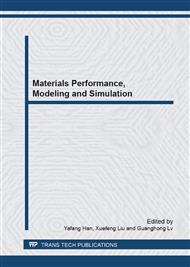p.88
p.96
p.105
p.112
p.119
p.125
p.133
p.141
p.145
Influence of Different Pouring Temperature to Properties and Organization of A356 Aluminum Alloy under Specified Conditions
Abstract:
Due to the excellent casting performance, good corrosion resistance, high strength and casting manufacturing costs, A356 casting aluminum alloy is widely used in automobile wheel industry of China. However, for the restrictions of the production equipment, technology and the production craft level, there are problems that product quality is not satisfied and the production efficiency is low in the mass manufacturing. In this paper, the effect of pouring temperature and mold temperature on the microstructure and mechanical properties were investigated on the basis of cooperation project with Bin Zhou wheel hub manufacturing company. The quantitative relationship between mechanical properties and microstructure was studied by statistical methods. The results indicate that pouring temperature is the main element to affect the mechanical properties of permanent mold casting A356 and the optimum pouring process parameter is about 744 .Mechanical properties have a liner relationship with secondary dendrite arm spacing in a certain extent.
Info:
Periodical:
Pages:
119-124
Citation:
Online since:
March 2013
Authors:
Price:
Сopyright:
© 2013 Trans Tech Publications Ltd. All Rights Reserved
Share:
Citation:


